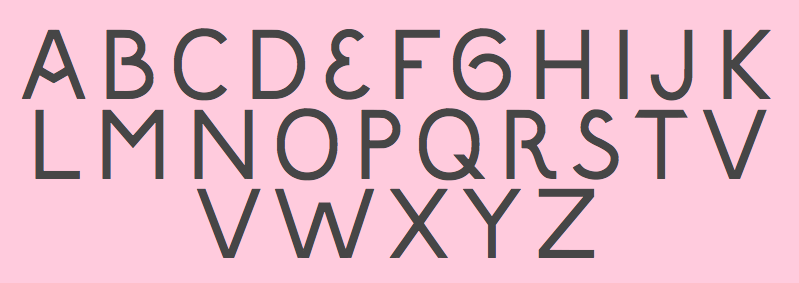TYPE DESIGN INFORMATION PAGE last updated on Sat Jan 10 12:18:52 EST 2026
FONT RECOGNITION VIA FONT MOOSE
|
|
|
|
Beuron
[Keno Wehr]
The free Beuron package maintained by Keno Wehr (University of Oldenburg, Germany) provides the typeface used in the works of the Beuron art school for use with TeX and LaTeX. It is a monumental script consisting of capital letters only. The fonts are provided as Metafont sources and in the Type 1 format. This package was launched in 2016, and includes suitable font selection commands for use with LaTeX. Wehr explains Beuronese art: Beuronese art was a reform movement of Christian art, established by Peter Lenz (1832-1928) and Jakob Wueger (1829-1892), who were friends from their studies in Munich, during their stay in Rome in the 1860s. On the one hand, it arose from the art of the Nazarene movement, but on the other hand, it turned away from the naturalism of the Romantic period and strove for a more geometrically stylized depiction of Christian themes. An important impact on this had the examination of ancient Egyptian art, which becomes noticable especially by a far-reaching renunciation of spatial depth in depiction. Lenz and Wueger entered the Benedictine abbey of Beuron (near Sigmaringen in Southern Germany) in 1872 and 1870 respectively, where they worked as Pater Desiderius and Pater Gabriel. Beuronese art was essentially carried by the circle of their pupils from the monastery in the following decades up to the 1930s. The Beuronese artists were not only commissioned to paint and furnish the monastery of Beuron itself, reestablished in 1863, but also quite a lot of other churches and monasteries in several countries of Europe. The Beuron art school reached its summit about 1900, when it received attention by the world of art beyond the religious milieu through the participation in various exhibitions. Due to the Second World War and church renovations in the following period many works of Beuronese art were partially or totally destroyed. Today remaining works can be seen for instance in Beuron (Chapel of St Maurus1 and Archabbey of St Martin), Ruedesheim am Rhein (Abbey of St Hildegard), Prague (churches of the former abbeys of Emaus and St Gabriel), but also in America in Conception/Missouri (Basilica of the Immaculate Conception). The murals painted by the artists of the Beuron school were provided with monumental inscriptions, taken from the Holy Bible or the prayer tradition of the Church, which support the didactic character of the paintings. For these paintings a script with some striking features was used, recurring in the most murals and also craft objects of the school with only minor variations. Unfortunately the art-historic literature dealing with Beuronese art says absolutely nothing about this script, although it constitutes obviously an integral part of that art. So the origin of the script is a matter of conjecture. Possibly it is in influenced by the inscriptions of early Christian basilicas in Italy. The Beuron typeface is recommended for headings and ornaments in prayer books, hymnals and the like. References: Hubert Krins: Die Kunst der Beuroner Schule. Wie ein Lichtblick vom Himmel, Beuron: Beuroner Kunstverlag, 1998. Harald Siebenmorgen: Die Anfaenge der Beuroner Kunstschule. Peter Lenz und Jakob Wueger 1850-1875. Ein Beitrag zur Genese der Formabstraktion in der Moderne, Sigmaringen: Thorbecke, 1983. |
EXTERNAL LINKS |
| | |

file name: Keno Wehr Beuron Condensed 2017

file name: Keno Wehr Beuron 2016

file name: Keno Wehr Beuron 2016b
| | |
|
Luc Devroye ⦿ School of Computer Science ⦿ McGill University Montreal, Canada H3A 2K6 ⦿ lucdevroye@gmail.com ⦿ https://luc.devroye.org ⦿ https://luc.devroye.org/fonts.html |

